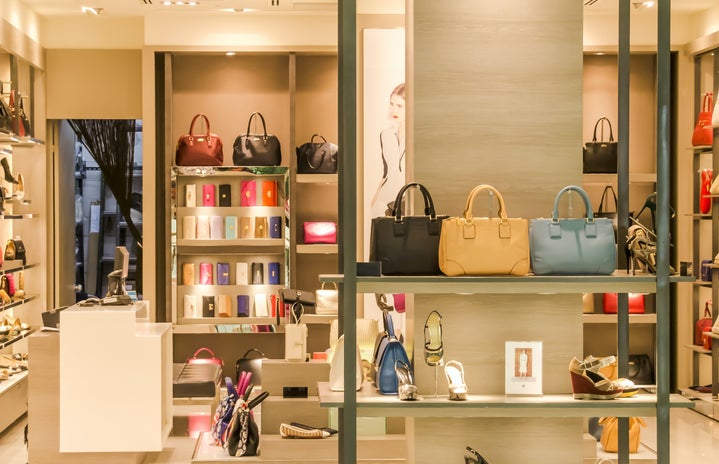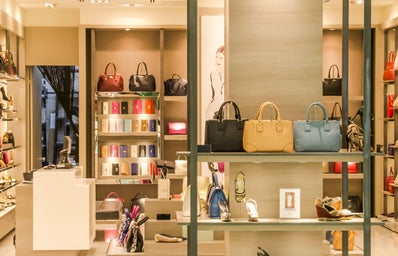It’s no secret that body types and shapes have been topic of conversation for years. It’s not always as obvious as magazines and art, but body obsession, expectations and fantasies have plagued even the silent relationships we have with ourselves. Women have been treated as if our bodies are made of plastic or clay, as if we’re dolls to pick and choose from. It’s frustrating, it can feel like the grim reaper of confidence gains strength through every film, advertisement and fashion spread we consume.
In recent years there seems to be a tug-of-war between wanting to be super thin, or having a curvy hourglass shape. Sometimes I’m happy with small boobs, but other times I want nothing more than an augmentation. When looking for swimsuits I cringe in the dressing room. When shopping for jeans I wish I had wider hips. When trying on dresses I imagine it’d be nice to have more curves. So what gives? Do the expectations society has set for me affect me that much? Most importantly, why can’t I just be happy I have a body in the first place? One that functions with little to no problems, one that allows me to experience the world.
To understand (and overcome) the whys and hows of women’s body ideals, we have to look into the past. Dating all the way back to 23,000 BCE men have been expressing their desires and fantasies of the “perfect” woman. The Venus of Willendorf is a small sculpture discovered in Austria around 1908. The 4-inch limestone statue depicts a woman with large breasts, a full stomach, and wide hips. Her face is completely absent, and her limbs weren’t given much attention which leads many archeologists to believe the artist modeled their figurine after an ideal rather than an actual person. Everything about Venus of Willendorf suggests that fertility and hardiness were the most sought-after qualities of a woman’s physique for Paleolithic peoples.
Jumping about 18,000 years into the future, Ancient Greece was a hub for art, sports, and appreciation of the body. We’ve come across hundreds of statues from the Ancient Greeks, most of which depict both men and women, and of course the Gods. The Romans copied many Greek sculptures, but the interpretations made for the goddess of beauty and love, Aphrodite (named Venus in Roman mythology) are possibly the most popular. Aphrodite had two official husbands, and bore children with multiple different people. She’s consistently presented as smooth, curved, and sensuous. As an icon for beauty through the ages, it’s interesting to think that Aphrodite would most likely be ignored in the fashion industry nowadays because of her figure.
The museums and history books do a good job of showing women’s bodies throughout time (though they seriously lack honoring women’s accomplishments and opinions). It’s easy to distance ourselves from the seemingly fanciful ideals of the past, but we have just as many, if not more standards for women today. The aftermath of the French Revolution brought simpler makeup and dresses for women, and allowed them to keep a more natural figure. In the Victorian era, pale, soft, and frail women were all the rage.
The turn of the century brought Charles Dana Gibson’s iconic illustrations known as Gibson Girls. The defined beauty standards brought on by Gibson’s images were quickly adapted into the everyday look of women in real life. Though the Gibson Girls were totally made up by Charles, he said he based the drawings off of “thousands of American girls.” Variations of women’s beauty continued through the 20th century, but a turning point was in the 1960s when British supermodel Twiggy hit the scene. With a shocking body mass index of 14.3, Twiggy’s impossibly thin frame changed the modeling world. Other notable names like Kate Moss, Naomi Campbell and Victoria Beckham flooded the media. While they’re beautiful women with wonderful careers, the waif thin figures they presented perpetuated the idea that skinny equates beauty. There’s no right way to be a “real” woman, and thin models are just as valid as any plus size girl. Lack of diversity is the enemy here, not the models themselves.
So maybe we don’t carve voluptuous women out of limestone and marble anymore, but the media we consume now has a variety of other ways to set the precedent for perfect. Ever since the first motion pictures were created in the 1880s, films have captured our attention and influenced the way we see the world. Makeovers serve as one of the most common tropes in movies that are largely consumed by teenagers. Vox has a video titled Anatomy of a makeover movie that explains this trope perfectly. Don’t get me wrong, Clueless, The Princess Diaries, and Miss Congeniality are some of my favorites. As a makeup and fashion lover, I’m a sucker for a good transformation. But sometimes it’s good to take a step back and think about the repercussions of a makeover, to think of what “beautiful” actually means.
We’re told all the time that everyone is beautiful. This statement has always confused me because we’re also taught that beauty is subjective—which it very much is. The problem is that we only ever see the people considered beautiful by those in positions of power. The ones who run the magazines, cast the films, and pick the models. We get influenced so much by others’ ideas of beauty that we start to believe it’s our own. When I was a kid I thought stretch marks were magical. I thought traits like soft bellies, freckles and birthmarks were wonderful. As I got older I realized there was a rift between what I considered beautiful and what I was told “real” beauty was. The absolute truth is that beauty is so incredibly subjective that it shouldn’t even be defined.
Choosing to see your body as beautiful is extremely difficult. It’s a process that takes time and conscious effort, but doing so is one of the most liberating revelations that can happen in your life. I know it’s changed mine. Whether you look like The Venus of Willendorf, Aphrodite, Twiggy, or anything in between, your body is yours. You’ll never get another one, and luckily it’s never too late to change the way you see your body. Embrace it, love it, and know that you define beauty for yourself.
All media sources are linked in the article.



